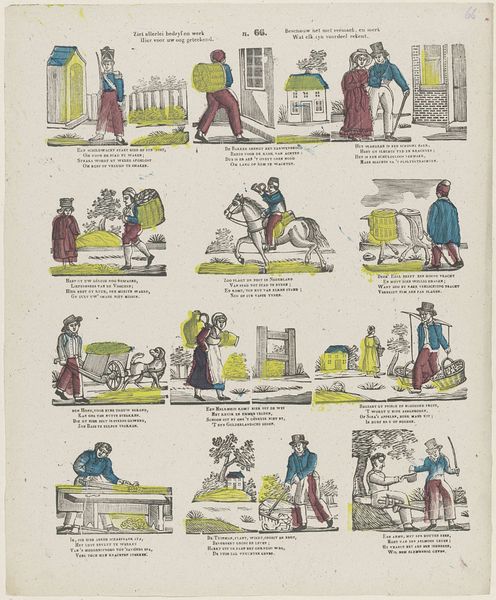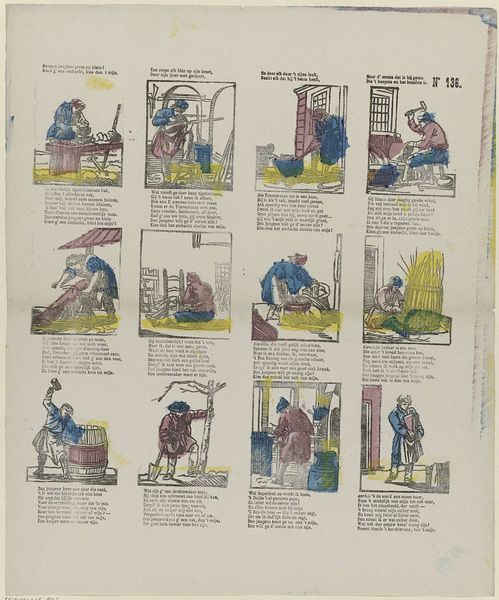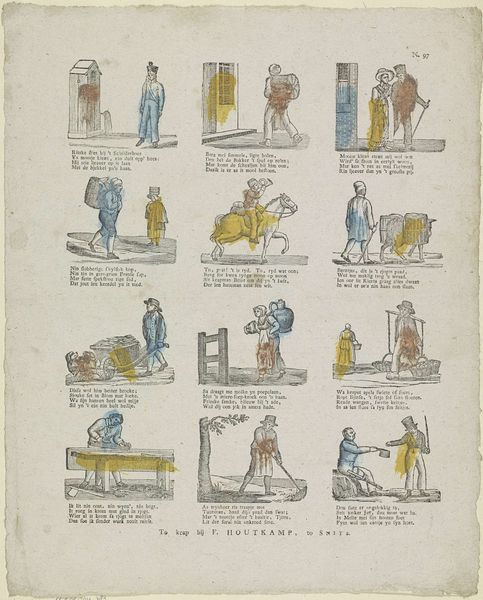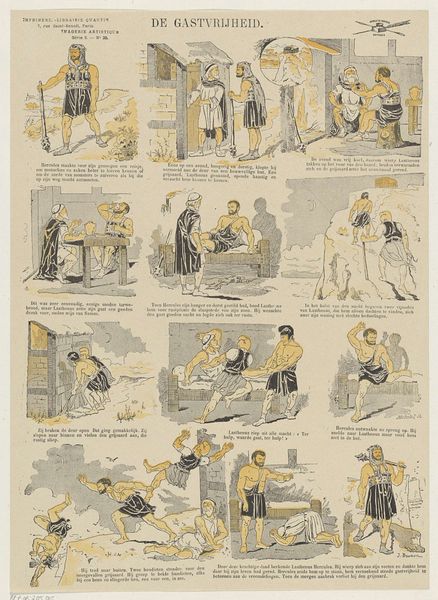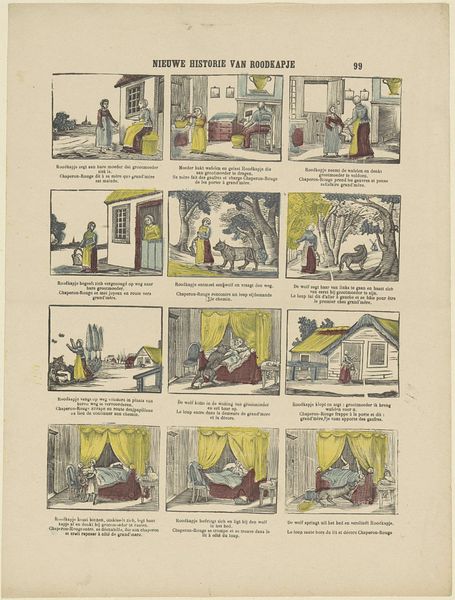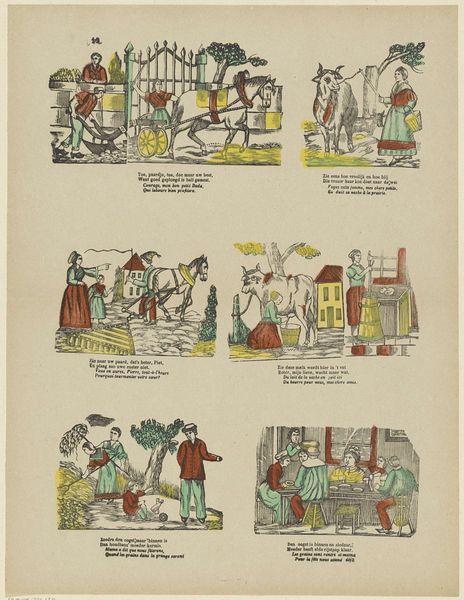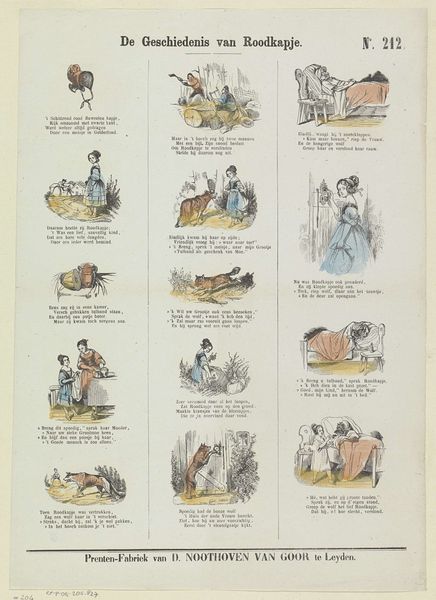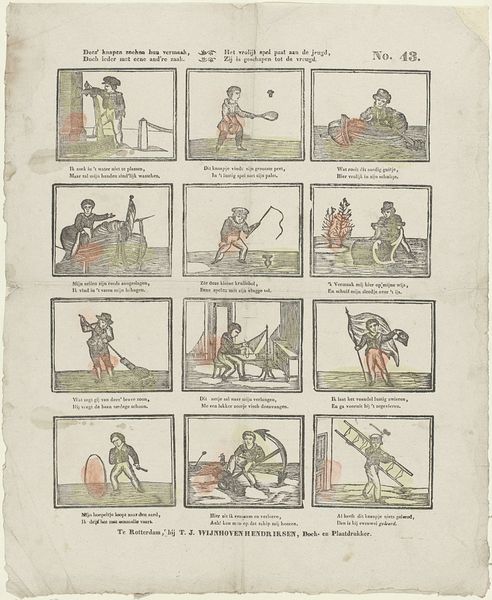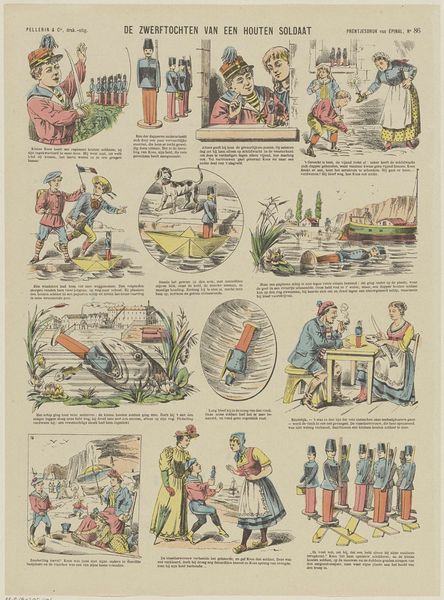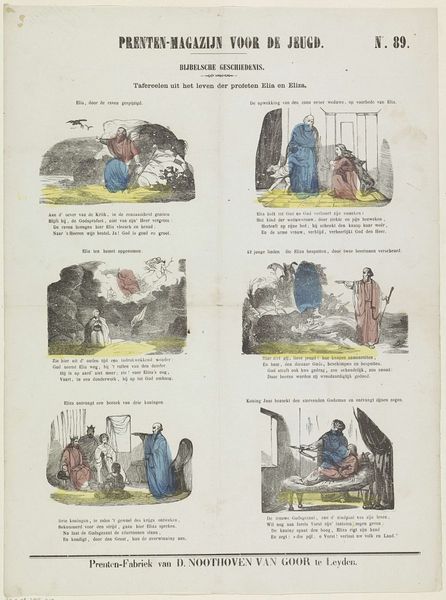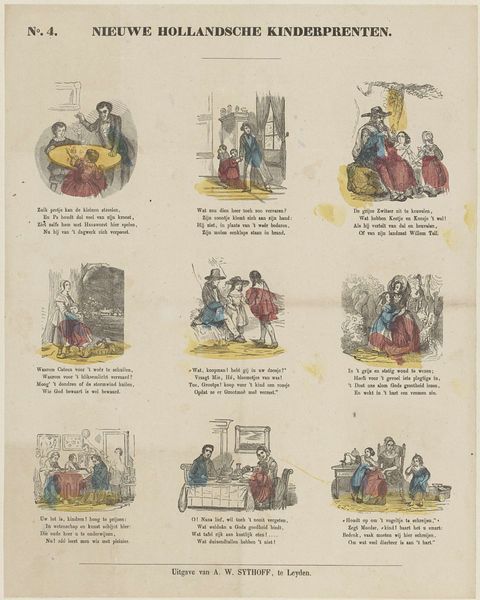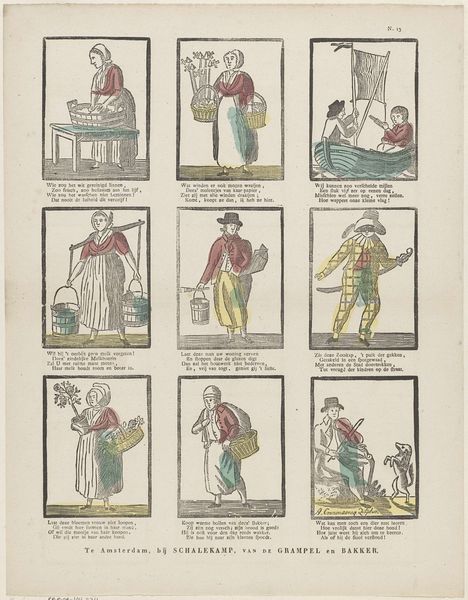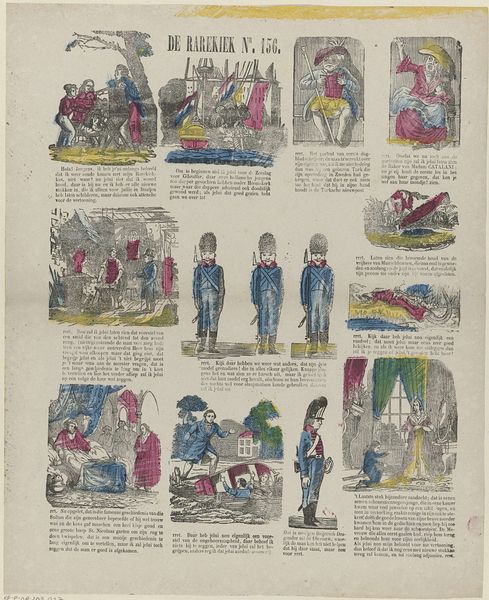
Leert, kinderen, uit deez' prent de ware kinderpligt, / Zoo als zij door het kind des bannelings werd verrigt / La fille du Banni, lui prouve sa tendresse, / Et combien son malheur la touche et l'intéresse / Zie hier wat somtijds geschied, / Tot vermaak of tot verdriet / Voici du soldat quelque traits, / Offrant du bon et du mauvais 1800 - 1833
0:00
0:00
philippusjacobusbrepols
Rijksmuseum
graphic-art, print
#
graphic-art
#
comic strip sketch
#
narrative-art
# print
#
comic
Dimensions: height 380 mm, width 301 mm
Copyright: Rijks Museum: Open Domain
Curator: I’m struck by the print’s antiquated composition; the subdued color palette gives it a quaint feel. Editor: Yes, “Leert, kinderen, uit deez' prent de ware kinderpligt…” produced sometime between 1800 and 1833, compels us to question conventional modes of storytelling and moralizing through art. It’s currently held at the Rijksmuseum. Curator: Intriguing title. Its symmetry and gridded composition organize sequential narrative in a didactic and formalist way, as if in deliberate conversation with classical structures and principles. Editor: Exactly, and the title reinforces this; translated roughly as "Teach, children, from this print the true childish duty", we must consider whose “duty” is prescribed here and by whom. What narratives and social norms does the artwork subtly perpetuate? Curator: But what cannot be overlooked is its execution. Brepols presents almost rudimentary figures contrasted with an engagement in pictorial storytelling…it almost presents like the high and low brow simultaneously. Editor: But consider: in Brepols’ era, popular culture provided instruction aligned to social structures that normalized colonial conquest, the military, and trade relations that fostered a developing modern economy. Are we perhaps witnessing a normalization of such structures? Curator: The narrative panels clearly express sentiments – from sorrow to elation – rendering morality lessons through visually digestible snippets. A form, perhaps, of proto-comics stripped of nuance. Editor: I agree; this print opens many pathways for contemplating the complicated social, political, and representational dimensions that undergird art’s narrative authority. Curator: The clean lines and spatial balance do resonate though. One truly could interpret the form’s intrinsic quality to locate beauty in balance, even amidst the weighty questions we ask. Editor: Balance, yes. A necessary equilibrium when tackling artwork with social implications from past and present, for sure.
Comments
No comments
Be the first to comment and join the conversation on the ultimate creative platform.
